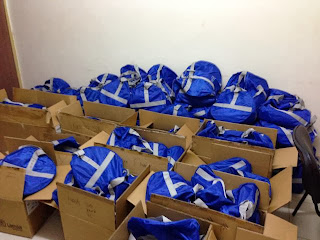“The Church is vibrant and growing in Africa,” said Elder David A. Bednar of the Quorum of the Twelve Apostles during his
recent visit to Africa.
There is an eagerness and light in the eyes of the African
Latter-day Saints, he said. “This is a place where many people live
challenging, difficult lives. They don’t have many of the temporal comforts and
blessings that people in the Western world have. Many of these Saints are
grateful to have one substantial meal a day. Yet, because of the gospel of
Jesus Christ, they have great light and hope. I learn a great deal from the
people every time I visit the African continent.”
“Africa is an enchanting and inspiring place,” said Elder
Bednar. “Africa is diverse and complex. There are highly industrialized and
sophisticated communities and rural and simple villages. The gospel of Jesus
Christ gathers all kinds of people into the gospel net. Even though there is a
common strong faith among the Latter-day Saints, there is also a remarkable
diversity.”
Africa is one of the most rapidly growing areas of the LDS
Church. Referring to that growth, Elder Bednar mentioned that local leaders in
the Democratic Republic of the Congo have an unusual weekly challenge in
sacrament meeting — finding enough time for confirmations. During a recent
meeting, 18 new members were confirmed.
“This is a land, a people, and a place of great faith in the
Lord Jesus Christ,” he said. “You can feel it as well as hear it when these
Saints pray and when they sing.
“These members have a simple faith that is uncluttered. It
is focused on Christ. And it brings many blessings and spiritual gifts into
their lives.”
Elder Bednar affirmed, “Every time I have an opportunity to
come and witness what the Lord is accomplishing among the people here, it is
thrilling for me. Africa changes me.”
And Africa changes me. . .
Now it is time to return to Colorado. I am thankful to have
met so many wonderful people here in Togo. I admire my Togolese medical
colleagues for their professionalism and their desire to improve the care that
they give to the mothers and babies of Togo.
When I get bogged down with the petty concerns of life, I
will strive to remember that the sun rises and sets (at 6 am and 6 pm!) upon
kind and caring people everywhere some of whom live in mud huts with thatched roofs across the
world in Togo, and that they love and care for their children just like I do. I
will return home with more gratitude to my Heavenly Father for my wife and
children and for the spiritual and temporal blessings I receive from Him. How
fitting it will be to return to commemorate the birth of His Son this
Christmas. see: http://mormon.org/story-of-Christmas?cid=HPWE120413210
Thank you for your interest and for reading this blog, for “A
traveler without observation is a bird without wings.” Moslih Eddin Saadi
Merry Christmas to all!
Steven Grover, M.D.
Highlands Ranch, Colorado

















































